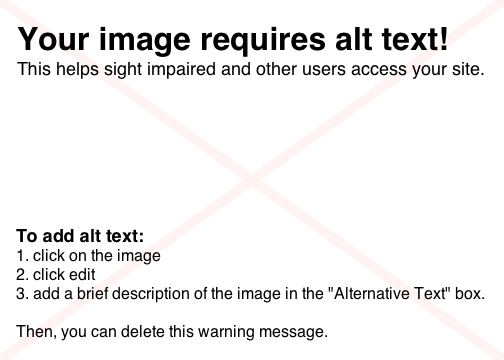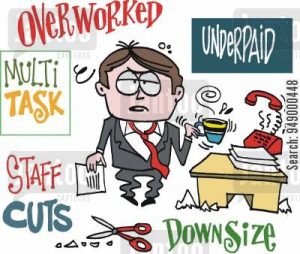Dylan Erazo 10/25/2018 ~ Revised ~ 11/16/2018
Professor C. Hall ENG 1101
The Puerto Rican Flag in New York
Yo soy un Nuyorican, growing up in New York with Puerto Rican roots, I can identify as being a Nuyorican. Many people in New York come from families with Puerto Rican background, Puerto Ricans represent 33% of Latinos in New York, but in some cases don’t consider themselves Puerto Rican. They grow up actin like a New Yorker if they from New York. Meaning that they don’t listen to the Spanish music, or speak Spanish or Spanglish, and if you asked them do they identify as Puerto Rican or Latino they may be like nah. Pero if you have la familia to embrace la musica y la comida y habla asi to talk like this in and out then you can associate yourself being Latino. School’s in New York are mad diverse you got kids with all types of culture and background. Not every Latino in New York is Puerto Rican you got Dominicans, Cubans, Ecuadorians you name it, ya tu sabes. It’s good to learn some Spanish entonces you can chat and make more friends because the Hispanic community is large.
Growing up in a Hispanic family means eating food that is deadass fire. Tu tienes comida asi, the food is like this so you got rice con beans y chicken, you know what its like to eat un pernil y tostones, there’s mad food that’s delicioso. New York is a large city with a lot of places to eat out. The New Yorker side of a Nuyorican is accustomed to a fast pace dealing with public transportation and rushing to work or school. You can eat on the way with all these corner deli’s and fastfood spots. You know what it feels like to appreciate some Chinese food when yah parents is too tired to cook or if you are tired from work. O cuando you going to school in the morning and you got like five dollars that shit right there is enough to get you a whole bacon egg and cheese with an Arizona or jugo. It be the worst when your bus runnin late or you see your bus and that shit says not in service, you finna head in the corner deli and buy something. Nothing like eating un pastelito and Arizona for like 2 dollas. You learn to appreciate the small things that New York has to offer and the cultural diversity it offers with all types of food. When you’re a third generation Puerto Rican, meanin that if yo grandparents came to the U.S. from Puerto Rico, some people are raised not knowing their culture or ever embracing it. They grow up just identifying as a New Yorker. Como un gringo, they are only use to their American side. Now if you was growing up in a Spanish speaking household then you prolly gonna be able to habla asi con otra gente. Nuyorican Spanish isn’t so good porque lo gente aqui en Nueva York don’t speak it as much. If you was in Puerto Rico then you’d pick up the language hella quick because that’s all they speak out there. But over here in New York the Spanish can switch in and out between English and Spanish, we call this Spanglish. That don’t mean you can’t speak full Spanish that just means you prefer to switch up with your family or friends. Pero a lot of hispanics don’t learn this, even tho the roots is there, they rather just stick to being un Americano or gringo because that is what they’re used to.
For me I grew up a New Yorker, this is deadass facts. When I was younger I was Dylan from the Bronx I still am but I’ve grown to embrace my Puerto Rican roots. I am a third generation Puerto Rican living in New York. I still have much to learn because I need to know more Spanish and bailar con la musica. When I was younger I didn’t know Spanish as much because my father never spoke it he didn’t really learn it because he was just raised up in the streets and outside more than with his parents. Like him the New Yorker in me is used to rushing to places, walking at a fast pace when I am on the go to school or in the city. New Yorkers are used to a deli or somewhere to eat being like a block away. I enjoyed mi abuelas homemade cooking, aroz con pollo is the shit. The smell of the beans, the rice, the chicken, it be having you anxious to eat. I would try savor every bite of the plate, then the next day kill the leftovers. I also enjoy connecting with mi familia, when I got older and learned how to speak Spanish more. When you’re talking to your aunts and uncle you ask in Spanish may I have the blessing or anyone who is older, out of respect. Having allat said I started off como un gringo, I was only familiar with my inner New Yorker. As I realized how much I enjoyed Spanish food, and chattin with the family in Spanish or Spanglish I began to take more interest in my Puerto Rican side. It was mad nice too when I visited Puerto Rico tambien.
When I visited Puerto Rico everything was different from anywhere I had ever been. Mi familia and I visited El Morro the fort in Old San Juan. The atmosphere was much nicer, la brisas (the breeze) get mad intense by El Morro, it can get dumb hot too but it was aight at the time. The fort El Morro is 475 years old. El Morro is located in Old San Juan which was the capital of Puerto Rico many years back. You could say I was a fish outta water, not used to speaking ode Spanish and la historia. I had visited the island once when I was younger but that don’t mean nada because I can’t recall allat. I was good with what I knew tho, I still was able to make them connections with my family, hablar, laugh, make some friends so it was dope.
In New York there is an annual Puerto Rican Day Parade, this a time to get lit, celebrated in Manhattan on Fifth Avenue. Puerto Ricans come out to share their pride for their culture. The National Puerto Rican Day Parade takes place in the summer when the city is most alive. The streets are crowded with loud music, Puerto Rican flags flood the streets of Manhattan. So if you thinking of driving in the city good luck chico, the streets is packed. Puerto Rican celebrities come out on the float to do performances. You hear mucha de Salsa y Reggaeton music. The parade is a way of showing appreciation to the Puerto Ricans living in New York. You see the streets flooded with the colors from the flags, all the Puerto Rican flags. The parade takes place in the summer when New York is most alive. New York is most alive in the summer because la gente estan blasting music in the street turning up. You hear salsa music and People all over come to celebrate and everyone has their tv’s on ready to watch the action. The National Puerto Rican Day Parade of 2018 was focused on creating that sense of unity especially after tragic Hurricane Maria. Apart of the parade there were 4,645 people marching under the Puerto Rican flags, that same amount of people was the death toll from the devastation of Hurricane Maria.

Spanish Harlem is almost like a capital for Puerto Ricans in the U.S. New York is the city with the largest Puerto Rican population in the world. Tu tienes la gente that was born here and the people that moved here from Puerto Rico for more opportunities. The term Nuyorican came about from writer Jesús Colón. The term unifies Puerto Ricans living in New York, making them Nuyorican. East Harlem is referred to as Spanish Harlem. Very heavy Latino presence in East Harlem. El Barrio is another way of referring to East Harlem in Spanish. Puerto Ricans make up the most of the Hispanic population in Spanish Harlem. La gente que vive en Spanish Harlem say that they are at home because of the strength in their community. There are restaurants in Spanish Harlem como La Fonda Boricua that is well appreciated within the community. Puerto Ricans help build this city, we have been around since very early New York seeking opportunities. We have really marked up and made this community ours. You see a lot of graffiti and Puerto Rican flags in peoples windows representing their community and sharing their pride so you feel their presence. 
Many people can be considered Nuyorican given the heritage and where you grew up. The thing is not many people embrace their Puerto Rican side because they weren’t brought up with it as much. They may just identify as being a New Yorker and nothing else. Your roots and culture should be appreciated because that’s your background of who you are. Even if you have to trace back or get familiar with something it’s worth connecting to your roots.
Citations
- Goicochea, Julia. “A Brief History of Puerto Ricans in New York.” Culture Trip, 30 May 2017, theculturetrip.com/north-america/usa/new-york/articles/a-brief-history-of-puerto-ricans-in-new-york/.
- “National Puerto Rican Day Parade 2018 ¡ Boricua ! ~ NY Latin Culture.” New York Latin Culture Magazine,
- Wierenga, Alexis, and Sean Billings. “2018 Puerto Rican Day Parade Marked By Hurricane Maria.” Newsweek, 11 June 2018,
- Berger, Joseph. “A Puerto Rican Rebirth in El Barrio; After Exodus, Gentrification Changes Face of East Harlem.” The New York Times, The New York Times, 10 Dec. 2002,
- “El Morro: Explore a 475 Year Old Fort.” SanSe San Sebastian Street Festival | Fiestas De La Calle Old San Juan | Puerto Rico Day Trips Travel Guide, 15 Apr. 2018,
- Kandle, Arielle. “A Day in East Harlem, From Historic Murals to Puerto Rican Markets.” New Women New Yorkers, 30 Oct. 2017, www.nywomenimmigrants.org/spanish-harlem/.

 Shot of a young businessman taking a break at his desk in a modern office
Shot of a young businessman taking a break at his desk in a modern office


